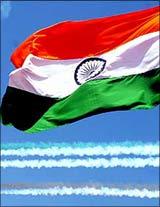In economic writings on India it is commonplace to describe Indian economic inequality to be relatively low, says Pranab Bardhan.
 In economic writings on India it is commonplace to describe Indian economic inequality to be relatively low.
In economic writings on India it is commonplace to describe Indian economic inequality to be relatively low.
In support, the inequality measure of Gini coefficient (with values of zero for no inequality, and one for extreme inequality) on the basis of NSS consumption data is usually cited.
This Gini coefficient in 2004-5 was 0.325, and is indeed lower than in many developing countries, including China, and by constant repetition, both in national and international documents and the financial press, this has become part of the folklore about Indian inequality.
But there are reasons to believe that the NSS data under-represent the rich, and in any case while for other developing countries the Gini coefficient often refers to income distribution, India's refers to distribution of consumption expenditure (as NSS does not collect income data), which is usually less than that of income (partly because the rich tend to save more than the poor).
The NCAER occasionally collects income data, and according to their data collected in a 2004-5 household survey, the Gini coefficient of income inequality comes to 0.535.
Contrast this with the corresponding figure for China, 0.387 -- see the comprehensive estimate by Lin, Zhuang, Yarcia and Lin in Asian Development Review, 2008. (Both the Indian and the Chinese estimates here correct for spatial price variation between rural and urban areas, which is not done in the usually cited estimates of Gini coefficients.)
Not merely the Indian estimate of income inequality far exceeds that of China, it is in the Latin American range.
But ethically and socially one is more interested in inequality of opportunity rather than that of outcome (like income).
After all, with the same opportunity two people can end up with different incomes, simply because one is more ambitious and hard-working than the other, and many of us may not be too worried about that as long as the opportunities are equalised. For Latin America some attempts have now been made to measure inequality of opportunity, but very little as yet in India.
But in a country like India inequality of opportunity will surely depend on distribution of land, of education, and social identity -- a child born in a rural landless adivasi family with very little scope for education will be severely handicapped in her life chances for no fault of her own.
Land distribution in India is much more unequal than, say, in China. The Gini coefficient of inequality of land distribution in rural India was 0.62 in 2002; the corresponding figure in China was 0.49 the same year. (This is partly because India has a much larger landless population.) One can say that this does not correct for land quality variation (say, from Rajasthan to the coastal deltas).
Land quality is partly taken into account in its valuation when land is included in the NSS Assets and Liabilities Survey. By these data, the Gini coefficient of ownership of asset distribution was 0.63 in 2002 in rural India, while the corresponding figure for China was 0.39 in the same year.
Most people don't know that India's educational inequality is one of the worst in the world: according to World Bank estimates, the Gini coefficient of the distribution of adult schooling years in the population, a crude measure of educational inequality, was 0.56 in India in 1998/2000, which is not just higher than 0.37 in China in 2000, but even higher than almost all Latin American countries (Brazil: 0.39) -- again, this is partly because of India's large illiterate population.
Taking a long view, what is more important than static inequality is inter-generational mobility. On this, quantitative empirical work is rather scanty.
Some preliminary estimates suggest that such social mobility is much more in China than in India, partly no doubt because of the deadening legacy of the system of caste oppression and discrimination in India.
Whenever I have raised the issue of India's high inequality, some economist friends object. Preoccupation with inequality, they point out, is harmful even for the poor, because more equity is achieved only at the expense of efficiency and economic growth.
My response is that although most of us are taught in our elementary economics courses about the equity-efficiency trade-off, we need to understand that this trade-off, though valid in some cases, is often false or highly exaggerated.
Barriers faced by the poor in land and capital markets and in skill acquisition and in coping with risks sharply reduce a society's potential for productive investment, innovation and human resource development.
They often block the creation of socially more efficient property rights (for example, some land reforms improve both equity and productivity).
Inequality that keeps the workforce largely uneducated and unhealthy cannot be beneficial for private business, apart from the crime and law-and-order problems that inequality-generated conflicts bring about. Moreover, institutions and opportunities for cooperative problem-solving are often foregone by societies that are highly polarised.
Of course, politicians sometimes use the excuse of equity to put all kinds of regulatory restrictions that stifle economic growth, but this is because we let them get away with it.
A Cato Institute piece by Swaminathan Aiyar states that the global slump has wiped out billions from the wealth of India's richest, and if the poor really cared about reduction of inequality, they'd have celebrated this event.
But he surely knows that this reduction in the net worth of India's corporate oligarchy has not at all reduced its corrupt grip in the political life, or lowered the power of local landlords or the political elite that capture local governance and misappropriate funds and services meant for the poor.
And the poor care about inequality because it blocks their progress and market participation in ways indicated in the previous paragraph. There is substantial evidence that the same 1 per cent increase in the growth rate is associated with less poverty reduction in more unequal areas. India's high inequality is a serious social blight.









 © 2025
© 2025